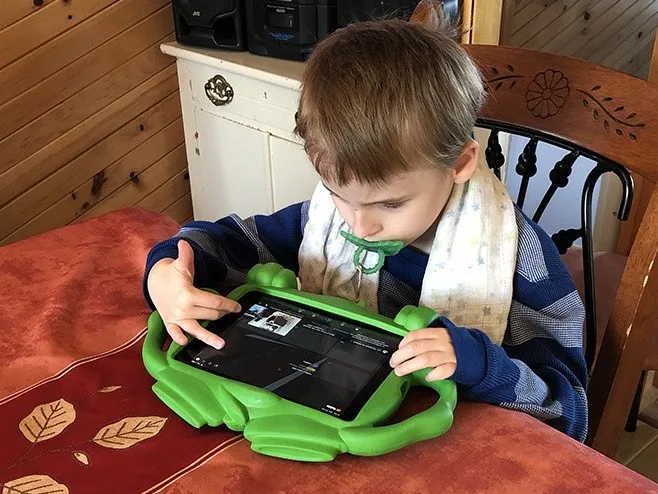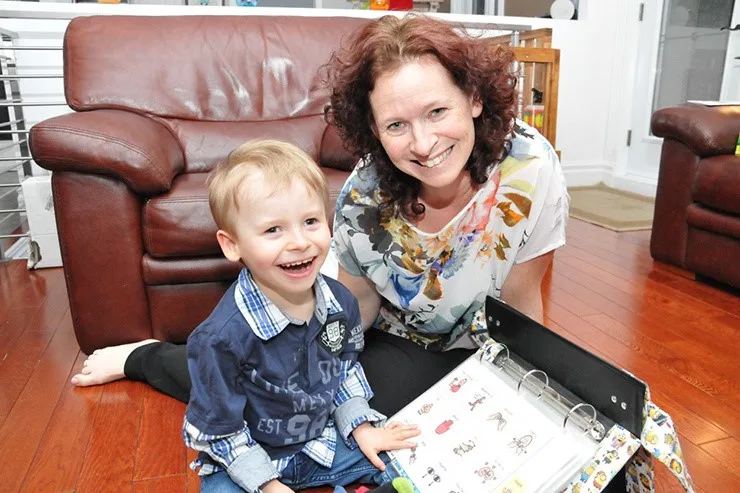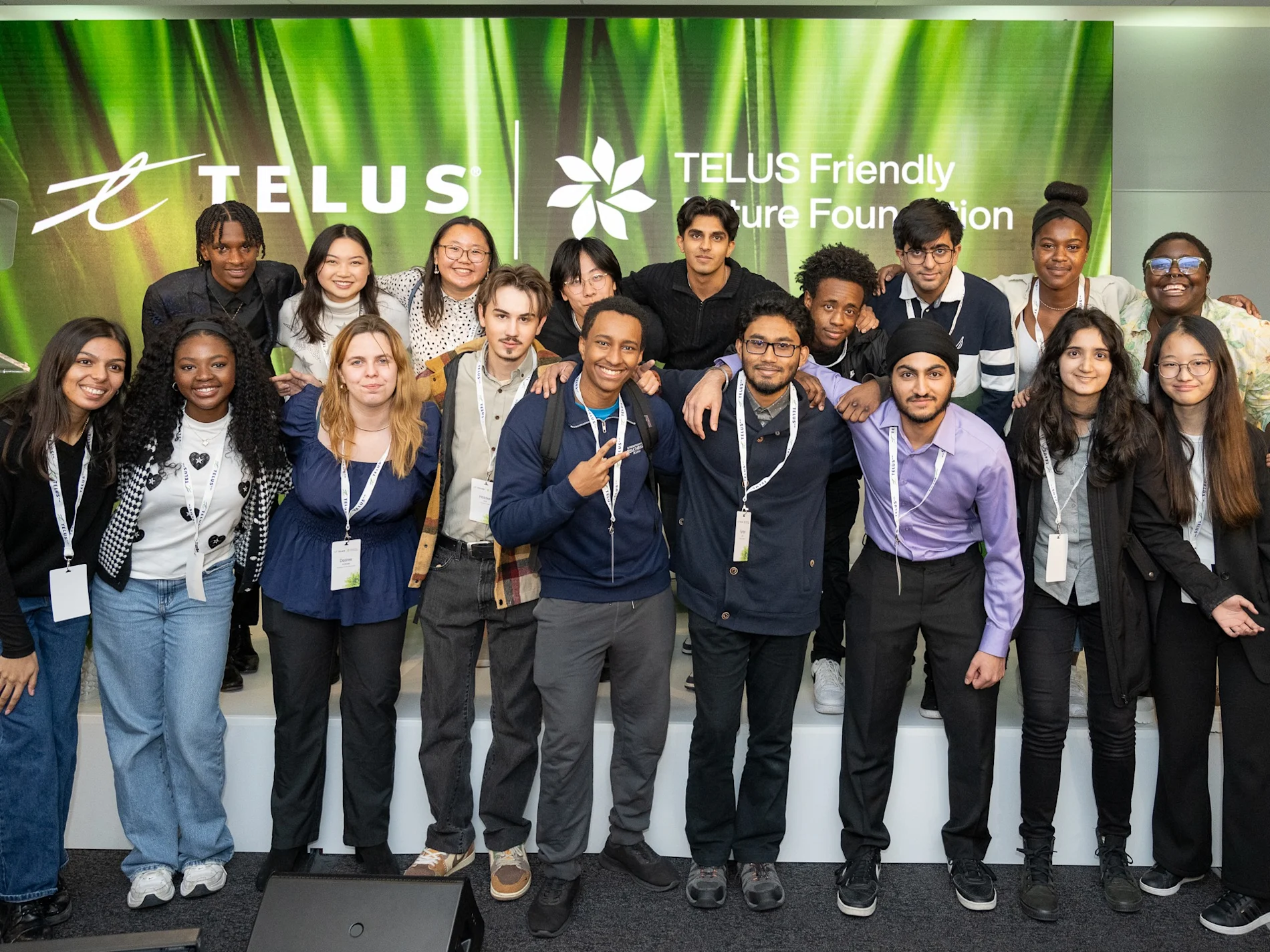
Giving back
How technology is helping Emrick Blanchette find his voice
Aug 12, 2021
(Above) With support from the TELUS Tech for Good program, Emrick learns to use the family iPad, which now includes pictures that allow the 7-year-old to more effectively communicate.
Emrick Blanchette can light up a room without saying a word.
His parents, Marie-Claude Bilodeau and Maxime Blanchette of Quebec City, started calling him their “bébé Bonheur” – a nickname that roughly translates to “bundle of joy” – from the first days of his birth seven years ago because of his happy disposition and unprompted episodes of laughter.
They would later learn these same traits are characteristic of a rare neurological disorder known as Angelman syndrome.
Emrick requires constant supportive care. He can’t speak. He can't eat on his own. He can't walk, though his mother and father continue to believe he will achieve this milestone one day.
‘‘We learn to live with this diagnosis, but we never accept it,” says Bilodeau of the guiding philosophy behind their child’s treatment and care.

Marie-Claude Bilodeau and her son Emrick communicate with their pictogram binder.
The tireless encouragement of the people around them, and supports received – such as adapted equipment from Quebec’s largest children's pediatric charity,
Opération Enfant Soleil
– give them faith that their child’s life will improve. Learning to communicate
Emrick’s world is already expanding.
Technology, combined with his parents’ relentless determination, has given the seven-year-old a voice despite a condition that has taken away his ability to communicate verbally.
For 4 years, with the support of family and friends, Bilodeau has found a way to communicate with Emrick using the PODD method – a technique that provides vocabulary for those who, like Emrick, are non-verbal or have no way to communicate via facial expressions or hands. Using a series of images, a selection of words and phrases can be put together by pointing, looking or other methods.
Bilodeau has traditionally kept these images in a large binder, which, until recently, the family has taken with them everywhere.
Now, through the support of
TELUS Tech for Good
, the family uses their tablet filled with images and technology specific to Emrick’s communication needs. Tech for Good supports people with disabilities who need professional assistance to independently use or control their smartphone or tablet, including free assistive technology and training adapted to their individual needs. For program participants, this support makes it possible to access life-changing technologies that might otherwise be out of reach.
“The TELUS Tech for Good program enables people of all ages to communicate and become more independent in an increasingly digital world,” says Gift Tshuma, Assistive Technology Specialist, March of Dimes Canada, the organization that administers the program across the country. ‘‘This initiative helps those most in need who also benefit from important human connections.’’
Government policies have made the digital divide in Canada worse, leaving some communities without optimal internet. Get informed.
For Emrick, access to a tablet marks an important turning point in his development. The boy can now navigate through a much wider range of images, each one opening up his universe a little more.
It means he can tell his parents that he loves them, and communicate more easily with his big brother, cousins, and his grandparents.
Bilodeau says the support from Tech for Good came just at the right time.
“Emrick was ready for these tools, but we didn't have the means,” she says.
“We’re so grateful for the support in what continues to be an extraordinary struggle.”
Explore similar articles

Help support connecting communities
Better government policies are needed to ensure better connectivity for Canadians.
Get informed


